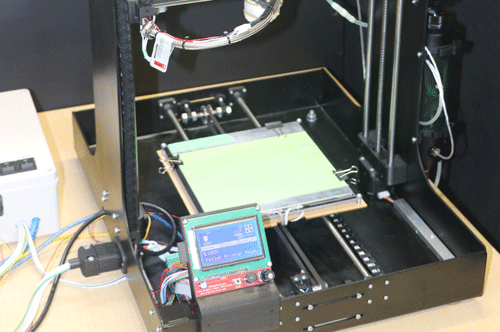TiDA fuels appetite for metal 3D printing
Polymer/metal pellet extrusion printer developed by TiDA and Massey University. Photo: TiDA.
The global metal additive manufacturing (AM) market is developing at a furious pace, as costs come down and production speed increases. Metal 3D printing in the prototyping and ramp-up phases of product development is becoming increasingly common, and the transition from prototype through niche and into low volume production has become substantially easier. As AM technologies develop and proliferate it has become suited to the needs of a wider range of small-to-medium-enterprise companies in
As well as continuing research into titanium alloys and powder metallurgy, including high-end Selective Laser Melting (SLM) 3D printing, TiDA is supporting
TiDA CEO Mike Fry says they modified the 3D printer to use pellet Metal Injection Moulding (MIM) feedstock, to print individual parts almost exactly as they would come out of a MIM process itself, but without any of the tooling required.
A wide range of different Metal AM technologies are available world-wide, many as off-the-shelf production machines, and others still in their development phase. But, Dr Fry says that for a
At TiDA, they are keen to demonstrate and help people understand the capability of AM technologies and assist with uptake of the tech if appropriate. “We advise on the application of latest overseas developments, and also research into new technologies where gaps in the commercially available technology are evident,” says Dr Fry.
Metal Injection Moulding is an established AM process used widely in consumer goods and the automotive industry. A development from polymer injection moulding, MIM uses a pellet feedstock of a metal powder combined with a polymer binder/lubricant. The polymer/metal mix is injected in to a mould to form the required shape. The polymer is then removed and metal particles fused in low-cost chemical and furnace post-processes to provide a dense metal part.
MIM offers a low piece-price in a semi-automated process, but the injection mould tooling used for this technology requires large-volume production runs to make the manufacturing of tooling cost effective.
“The ability to develop prototype MIM parts using exactly the same feedstock and post processing without the tooling cost is of great interest to people thinking of manufacturing a volume part by MIM, and potentially for small production volumes where traditional MIM is not cost effective.”
Some of the key aspects of the 3D printer developed with
- Low-cost melt/extrude printer platform, related to consumer-level polymer 3D printers.
- Using an auger screw to feed the pellets into a heated zone to be melted. Once melted they are extruded onto a moveable platform.
- The printer utilises uncommon features that can be customised depending on the type of material being printed, including a drip feeder which controls the quantity of material entering the extruder, and novel thermal and mass transfer controls.
- The system was designed with simplicity in mind, using available open-source software and control systems. This allows the printer to be adaptable for a range of materials.
“The project has been a great success so far, with initial titanium test parts successfully printed – a local
Date posted: 15 June 2018

